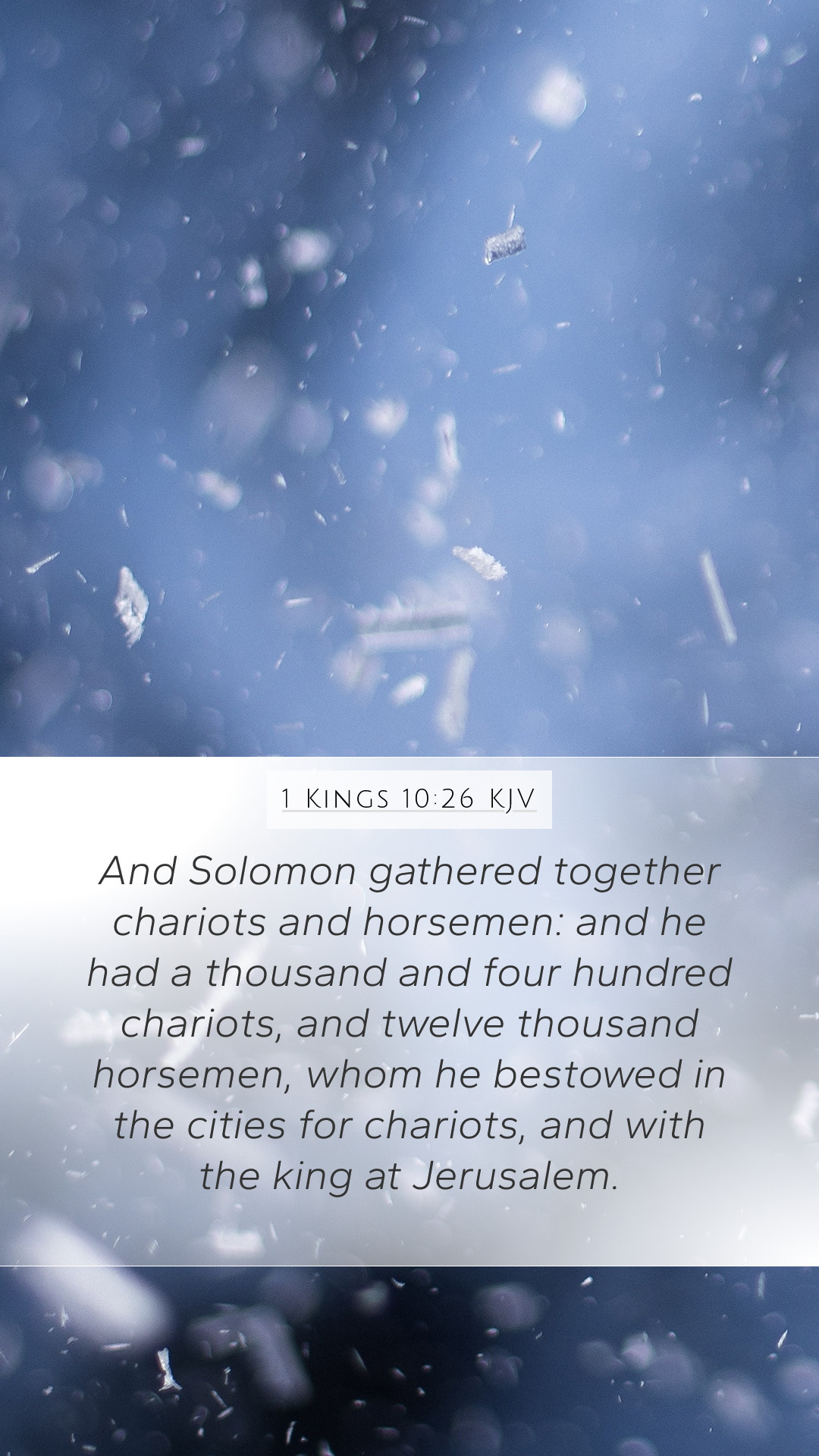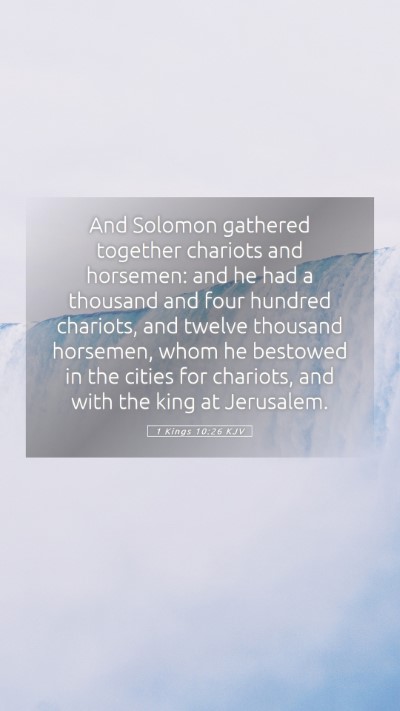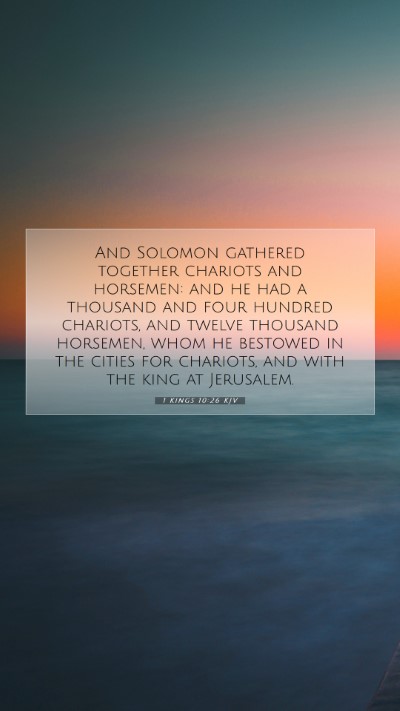Meaning and Interpretation of 1 Kings 10:26
The verse 1 Kings 10:26 states: "And Solomon gathered together chariots and horsemen; and he had a thousand and four hundred chariots, and twelve thousand horsemen, whom he placed in the chariot cities, and with the king at Jerusalem."
This passage captures a significant moment in the reign of King Solomon, highlighting his wealth, military strength, and the expanding influence of Israel during his governance. Below is a detailed biblical commentary and interpretation of this verse derived from the insights of Matthew Henry, Albert Barnes, and Adam Clarke.
Contextual Overview
The historical context of 1 Kings 10:26 situates us during the height of Solomon's reign, noted for its peace, prosperity, and impressive diplomatic relations. Solomon’s acquisition of vast numbers of chariots and horsemen symbolizes military readiness and the capacity to protect Israel's borders and maintain peace.
Commentary Insights
Matthew Henry's Commentary
Matthew Henry emphasizes that Solomon's accumulation of chariots and horsemen is indicative of both his wealth and his political acumen. The chariots symbolize military power, which was crucial for a king in that ancient context. Yet, Henry warns against relying too heavily on military might, suggesting that true security comes from faith in God rather than military strength.
Albert Barnes' Commentary
Albert Barnes notes that Solomon's establishment of chariot cities points to significant developments in infrastructure, serving not only military purposes but also contributing to trade and communication within the region. He argues that the strategic positioning of chariots was necessary for quick mobilization in times of war, demonstrating Solomon’s wisdom in governance.
Adam Clarke's Commentary
Adam Clarke provides a linguistic analysis of the numbers mentioned, indicating that 1,400 chariots and 12,000 horsemen reflect the immense resources Solomon had at his disposal. Clarke suggests that this wealth is a testament to God's blessings upon Solomon, but it also opens a conversation about the responsibilities and potential pitfalls of such grandeur.
Theological Insights
- Symbolism of Chariots: Chariots in the Bible often symbolize power and status, representing the technological advancements of the time which were pivotal in warfare.
- Organization and Administration: The placement of chariots and horsemen in cities indicates Solomon's organized approach to governance and defense, highlighting the importance of infrastructure in nation-building.
- Divine Blessing and Human Responsibility: Solomon’s wealth and military capabilities serve as a reminder of God’s blessings but also emphasize the need for righteousness and wisdom in leadership.
Practical Applications
Reflecting on 1 Kings 10:26, we can draw several practical lessons:
- Trusting in God's provision rather than solely in our resources or military might.
- The importance of wise governance and strategic planning in leadership.
- Recognizing that material blessings come with responsibilities to act with justice and integrity.
Cross References
- Deuteronomy 17:16 - Caution against multiplying horses (military reliance).
- 1 Kings 4:26 - Solomon's wealth and organization of his kingdom.
- 2 Chronicles 1:14 - Further details on Solomon's acquisition of chariots.
Conclusion
In studying 1 Kings 10:26, we gain insights into Solomon's reign that extend beyond mere historical data. The verse educates us about the relationship between divine blessing and human responsibility, the significance of wise leadership, and the importance of faith over reliance on military strength. It provides a platform for deeper Bible study insights and encourages believers to grasp the broader implications of Scripture in their daily lives.


